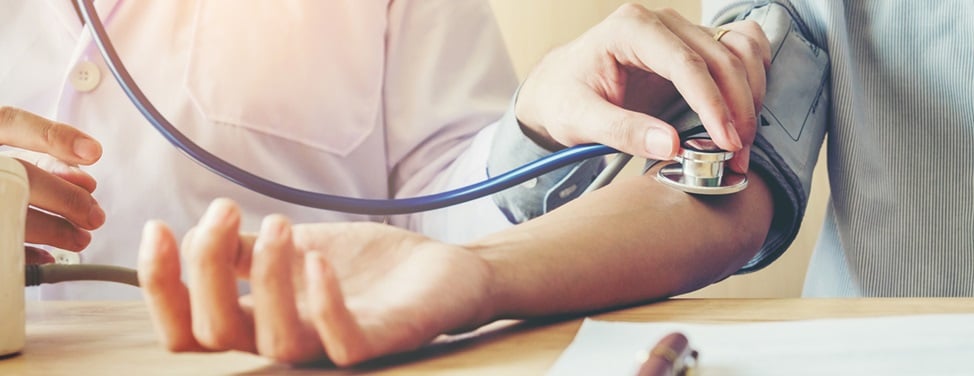Non-modifiable risk factors for heart disease
Even though you can't change non-modifiable risk factors, it's important to be aware of them.
Age
Age itself increases your risk of developing heart disease. According to the American Heart Association, about 80% of people who die from cardiovascular disease are 65 or older.
Sex
Although heart disease has long been considered primarily a men's disease, it is the top cause of death for both men and women. Women tend to develop it about 10 years later in life than men, but often have poorer outcomes.
Family history
While you can't change your family medical history, it's important to know about it and share it with your doctor. Your risk for developing heart disease increases if you have a relative who developed heart disease before age 55. If your parents developed heart disease later in life, it may have been because of their age rather than their genes.
Race
African Americans are at greater risk of developing cardiovascular disease and are more likely to die of heart disease than whites.
Modifiable risk factors for heart disease
While you can't control your non-modifiable risk factors for heart disease, many risk factors can be modified through lifestyle changes that can lower your overall risk.
High blood pressure (hypertension)
Blood pressure is recorded as a ratio of systolic blood pressure to diastolic blood pressure. The top number, systolic blood pressure, measures the pressure in the arteries when your heart beats. The bottom number, called diastolic blood pressure, measures the pressure in the arteries between the heartbeats.
Starting at age 18, you should have your blood pressure measured at every doctor visit, or at least every two years. A healthy blood pressure reading is less than 120/80 mmHg, regardless of your age. The full blood pressure guidelines are:
| Blood Pressure Classification |
Systolic blood pressure (mmHg) |
|
Diastolic blood pressure (mmHg) |
| Normal |
Less than 120 |
and |
Less than 80 |
| Elevated |
120–129 |
and |
Less than 80 |
| Stage 1 high blood pressure |
130–139 |
or |
80-89 |
| Stage 2 high blood pressure |
140 or higher |
or |
90 or higher |
| Hypertensive crisis (seek medical care right away) |
Higher than 180 |
or |
Higher than 120 |
For people older than 50, doctors pay more attention to systolic blood pressure than diastolic blood pressure as a major cardiovascular disease risk factor.
Many people have high blood pressure (also called hypertension) for years. If left untreated, it can lead to coronary heart disease, heart attack or stroke.
Learn about the risk factors for high blood pressure.
Men, women and high blood pressure
Until age 45, a higher percentage of men than women have high blood pressure. Between ages 45 and 64, the percentages are similar. After age 64, a much higher percentage of women than men have high blood pressure.
Cholesterol
Your doctor can check your cholesterol levels with a lipid profile, which is often included in routine blood tests. A lipid panel will reveal your levels of low density lipoprotein (LDL) cholesterol, high density lipoprotein (HDL) cholesterol, triglycerides and total cholesterol. These are measured in milligrams per deciliter (mg/dL).
- LDL (bad) cholesterol. This type of cholesterol contributes to artery blockages (plaque). Most people should aim for an LDL cholesterol level of 100 mg/dL or lower. If you are at very high risk for developing cardiovascular disease, or if you have already had a heart attack, you may need your LDL level to be below 70 md/dL.
- HDL (good) cholesterol. HDL cholesterol removes cholesterol from the arteries and takes it to the liver where it can be passed out of the body. High levels of HDL cholesterol lower your risk of developing cardiovascular disease. An HDL level of 60 mg/dL or higher is considered excellent, providing you with optimal protection.
- Triglycerides. Triglycerides are the most common type of fat in the body. Many people who have heart disease or diabetes have high triglyceride levels. A normal triglyceride level is less than 150 mg/dL.
- Total cholesterol. This is the total amount of cholesterol in your blood based on your LDL cholesterol, HDL cholesterol and triglyceride numbers. The healthy level of total cholesterol is less than 200mg/dL.
Diabetes
Diabetes mellitus (diabetes) affects how your body regulates sugar levels in your blood. Over time, high blood sugar can damage blood vessels as well as the nerves that control the heart.
If you've been told you have pre-diabetes, this means that your blood sugar level is higher than normal but not high enough to be diagnosed with diabetes. Without lifestyle changes, you will likely develop diabetes within the next 10 years.
Smoking
Smoking is the most preventable risk factor for heart disease. Smokers have more than twice the risk of developing cardiovascular disease as those who don't smoke. On average, smoking can decrease a man's life by 13 years and a woman's life by 14. Even exposure to secondhand smoke can increase your risk of developing heart disease.
UCSF's Fontana Tobacco Treatment Center provides expert help to people who want to stop smoking, vaping, chewing, or otherwise using tobacco.
Excessive alcohol use
Drinking too much can raise blood pressure levels, elevate triglycerides and increase the risk of heart disease. Men should not have more than two drinks a day and women should not have more than one drink a day.
Obesity, unhealthy diet, and a lack of physical activity
Obesity significantly increases your risk of developing life-threatening conditions, such as heart disease. A well-rounded diet of whole grains vegetables, fruits, and healthy fats can reduce a person's chances of carrying excess weight. Getting regular physical activity can also help.


















